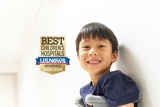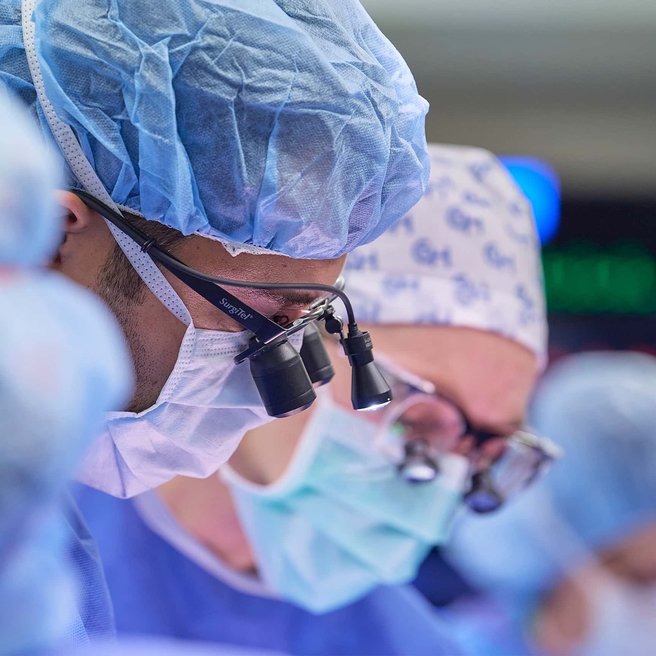What is a C1 atlas spine injury?
The C1 atlas is the uppermost cervical vertebra of the spine. It supports the head and — along with the C2 axis, the cervical vertebra just below it — allows the head to nod and rotate from side to side.
At birth, children have softer bones. That is true of the C1 atlas as well. C1 ossification (solid, hard bone) begins in fetal life and continues to the third or fourth year of life.
Children's heads are larger, with respect to their body size, than adults. Due to this mismatch, young patients have increased chances of spine injuries throughout the cervical spine, but especially between the skull (occiput) and the upper cervical spine. The most common cervical fracture in younger children usually involves the first two vertebrae, C1 and C2.
Injury to the cervical spine occurs in 1-2 percent of pediatric trauma patients; however, death from these injuries is 16 percent, so any indication that there may be a spinal injury should be treated seriously and a physician should be consulted immediately.
If you suspect your child has sustained a neck injury, don’t move your child. Place towels or blankets around your child’s head to keep it still until emergency help arrives.
Causes
Despite the fact that these spinal bones are not fully ossified in very young children, fractures, sprains, dislocations and other injuries can occur to the C1 atlas. Injuries can be caused by:
- Birth injuries
- Car accidents
- Falls — such as from playground equipment
- Sports injuries — such as tackle football, wrestling and snowboarding
- Diving accidents
- Lack of blood flow
- Compression injuries from a blood clot, fractured bone or ruptured disc
- Bending or buckling of ligaments
- Angulation (a sharp bending) of the spinal column
- Violence
- Penetrating trauma
Signs and symptoms
Signs and symptoms of a C1 atlas injury can vary in severity and include:
- Pain or stiffness in the neck
- Muscle weakness
- Breathing problems
- Inability to move arms or legs
Testing and diagnosis
To diagnose injuries to the C1 atlas, physicians at Children's Hospital of Philadelphia (CHOP) perform a comprehensive physical examination and detailed family history of the child.
At CHOP, we use the following imaging tests to help determine your child’s diagnosis and the potential cause of trauma-related spine injury.
- X-rays, which use invisible electromagnetic energy beams to produce images of internal tissues, bones and organs on film
- Magnetic resonance imaging (MRI), which uses a combination of large magnets, radiofrequencies and a computer to produce detailed images of organs and structures within the body
- Computed tomography (CT) scan, which uses a combination of X-rays and computer technology to produce cross-sectional images (“slices”) of the body
For babies younger than 1 year of age, MRI is the preferred imaging technology because the bones of C1 are not visible in their entirety in the X-rays of young babies.
Spine surgeons at CHOP have extensively studied the use of MRI in assessing cervical spine injuries, particularly for patients who are non-verbal or comatose. In some cases, the MRI uncovered additional injuries that X-rays did not document and because of the more detailed information, played a significant role in the child's ultimate treatment plan. Read the study abstract for details.
Treatments
At CHOP, children with C1 atlas fractures are treated with a neck brace, traction or cranial tongs, depending on the injury.
In the most severe C1 atlas injuries, surgery may be necessary to stabilize the child’s spine.
Surgeons at CHOP have published research on treatment and outcomes for children with traumatic atlanto-occipital dislocation. For details, read the study abstract.
Support services
We offer a wealth of ongoing support and services to your child and family. Your child will have access to clinical services such as physical and occupational therapy, as well as psychosocial support from social workers and psychologists who can help your child deal with any emotional effects of the injury.
If your child needs surgery, we take every precaution to ensure safety in spine surgery. Our multidisciplinary approach to care helps us address all aspects of your child’s care and treatment.
Surgery can dramatically improve some traumatic spine conditions, but it can also be a stressful experience for you and your child. Our team can help you to prepare your child for surgery and know what to expect during surgery.
We also recognize your child's pediatrician or referring physician as an important part of your child's care team and provide regular updates about your child's progress.
Follow-up care
Anytime a child has a neck injury, it is important to follow-up with a physician. In some cases, pain, breathing difficulty or paralysis may develop later — even if the symptoms were not present during your child’s initial evaluation or treatment.
Your physician will advise you about an appropriate follow-up schedule for your child. Follow-up care is available at CHOP's Main Campus or at any of our CHOP Care Network locations.
Our pediatric clinical professionals will follow your child until young adulthood (between age 18 and 21) and help transition to adult orthopedic care, if needed.
Outlook
Depending on the severity of the injury to the C1, your child may experience paralysis of some or all of the breathing muscles and possibly arms and legs. Your child may need a ventilator to help breathe for a period of time.
While C1 atlas injuries are serious, observation has shown pediatric patients with similar spine issues recover more quickly and to a greater extent than adults who have experienced the same injury.
With rapid diagnosis and treatment, some children can recover completely.

Why choose CHOP
By sharing our surgical knowledge, clinical experience and innovative research, our program offers a depth and breadth of experience treating spine conditions that is unparalleled in the region.
Resources to help
Spine Program Resources
We have created video, audio and web resources to help you find answers to your questions and feel confident with the care you are providing your child.
